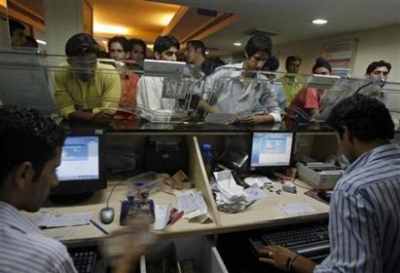 Public sector banks are supposed to raise Rs 1.1 lakh crore of the Rs 1.8 lakh crore that they need over the next four years.
Public sector banks are supposed to raise Rs 1.1 lakh crore of the Rs 1.8 lakh crore that they need over the next four years.
The only positive thing about the government’s decision to provide Rs 22,915 crore (Rs 229.15 billion) of capital to 13 public sector banks is that the process has been frontloaded, meaning funds are being infused early in the financial year instead of the past practice of giving them in the latter half of the year, which used to make such an exercise meaningless.
The move is also in line with the Reserve Bank of India’s requirement that Indian banks must fully conform to the higher Basel-III capital adequacy ratios by March 31, 2019, and no government would like to be seen as a shareholder that does not bring in money even to ensure regulatory compliance.
But there are several problems, too.
To begin with, it is not clear why the government moved away from its earlier approach, made public at the time of announcing the ‘Indradhanush’ scheme on the eve of the Independence Day in 2015, that only well-managed banks would get capital.
Hence, the capital allocation process in which only 25 per cent of the amount is tied to efficiency parameters looks arbitrary and discretion-based.
The government’s rationale that the capital infusion was based on an assessment of need, banks’ projections of credit growth and an objective assessment of the growth potential of each PSB just doesn’t wash.
Also, the assertion that 75 per cent of the amount is being released now to provide liquidity support for lending operations as also to enable banks to raise funds from the market is questionable.
First, as State Bank of India Chairman Arundhati Bhattacharya has said, loan growth is not dependent only on capital; it is also a function of the external economic conditions.
Even without the fresh infusion, SBI’s capital adequacy was in excess of 13 per cent and the reason why lending didn’t take off was the lack of bankable projects.
Second, public sector banks are supposed to raise Rs 1.1 lakh crore (Rs 1.1 trillion) of the Rs 1.8 lakh crore (Rs 1.8 trillion) that they need over the next four years.
The problem is these banks are unlikely to gain access to the capital markets for equity capital.
Listed PSBs, except State Bank of India and Bank of Baroda, are now trading at a significant discount to their book value, severely limiting their ability to attract external capital.
The other problem is of course the limitation of the government holding not falling below 51 per cent.
With its shareholding below 60 per cent in as many as nine PSBs, the scope for any significant dilution of government’s ownership in many of these banks is limited by existing laws.
In that context, the latest exercise on capital infusion seems to be a half-hearted measure.
Given the fact that it is only a temporary breather for PSBs, the government now needs to look at the harder options.
The ‘Indradhanush’ scheme, for example, talked about empowerment, accountability and governance reforms.
As the Banking Boards Bureau is only an interim measure, the government must fast-track the setting up of a non-operative holding company for all banks to minimise its role in managing the affairs of PSBs.
And since infusion of adequate capital is a problem given fiscal limitations, the government should also look at a narrow or ‘limited purpose’ banking model for weak PSBs, since closing them down could be a politically explosive move.
Image: A bank. Photograph: Reuters












 © 2025
© 2025